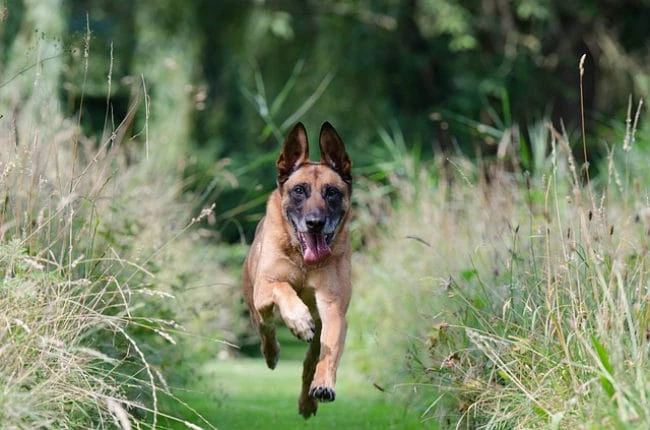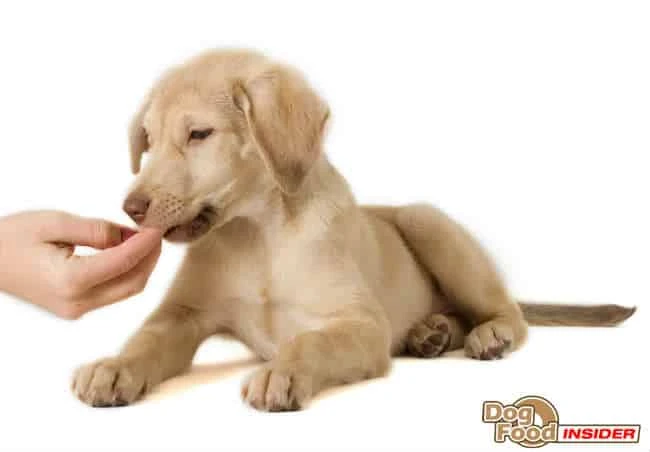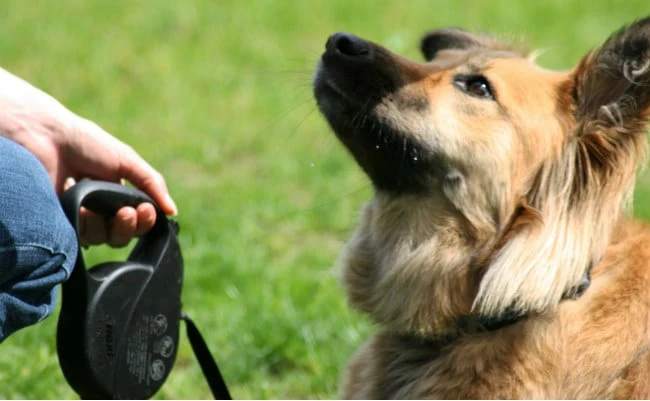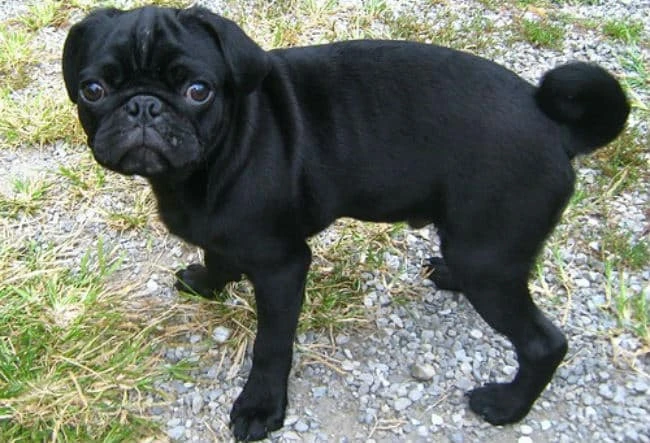Crate Training a Dog, Crate Training a Puppy, Crate Training Puppies
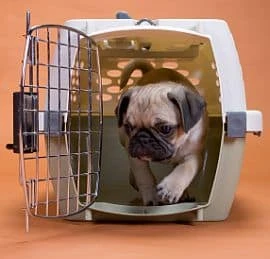
Crate Training a Dog
Crate Training a Dog…
In this section you will learn the best dog training tools, techniques, advice, methods and basic commands to make crate training a dog easy and more effective.
You want to make your dog feel at home in his crate. As soon as you start using the crate as a punishment method your are never going to successfully train your dog to use his crate.
Consequently in this section we will provide a step by step guide to crate training your dog fast and effectively.
Crate Training a Dog – Step 1

1. When you are crate training a dog it is important that you place the crate where the crate and your dog will be near the family.
There us no point putting the crate in some far off place in the House and then expect your dog to feel part of the family.
2. As with all areas of dog obedience training, whether you are crate training puppies or adult dog crate training it is important that you and your family choose a cue phrase when you want your dog to go in his crate.
Use something like ‘Crate Time’ or ‘Kennel Time’ – it doesn’t matter on the phrase as long as you all use the same phrase so that your dog won’t get confused and keep it short and to the point.
3. If you are going out your dog should be in his crate. If you are getting dinner ready your dog should be in his crate.
If you are off out – crate your dog.
It may seem like your dog is in his crate allot but as soon as he is able to control his bladder he will be able to spend more time out of the crate.
4. The safety of your dog is of paramount importance – if you are using a wire crate as opposed to a plastic crate don’t leave your dogs collar on as it may get stuck on the wire.
When crate training puppies or your adult dog – safety is the most important issue.
Top Tip#
When you are dog crate training the size of the crate should be large enough for your dog to stand up and turn around quite easily.
If you make the crate too big your dog will be able to potty on his blanket and then move to the other side of his crate and stay dry.
If you keep the crate at the right size your dog will not want to potty in his sleeping area as when he was a puppy with his litter he was taught to keep where he slept dry.
If you own two dogs and want to use the same crate but it is too big – try using a separator to make the crate area smaller – obviously make sure that your dog is safe and has enough room – check with your Vet first.
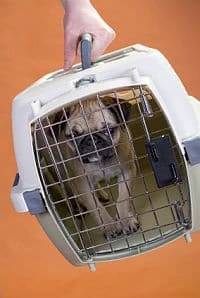
Crate Training a Dog
Step 2
1. Don’t rush the crate training process as your dog needs to get used to his crate.
If you open the door and just push your dog in there – he will see the crate as a punishment and you will have failed before you even start.
2. Start by putting some of your dog’s favorite treats in the crate with the door open.
Do this throughout the day and let your dog go into the crate to eat the treats – praise your dog but do not shut the door.
3. Every-time you feed your dog put his bowl in the crate and then shut the crate door – but with the food in the crate and your dog outside.
The aim is for your dog to really get excited about his food that he can see in the crate. Give it a few minutes and then open the crate door and use your cue phrase ‘Crate Time’ or whatever you chose so that your dog can go and eat his food – do not shut the door yet.
Crate Training a Dog
Step 3
Your dog should now be going quite happily into his crate but if he is still not keen then you are not ready for step 3. Continue with step 2 until your dog has mastered this stage before moving on – it’s not a race.
1. Put one of your dog’s favorite treats in your hand and show the treats to your dog. At the same time as you do this use the treats as a lure and repeat the ‘Crate Time’ phrase.
When your dog has followed the lure into the crate give him the treats and lots of praise. Practice this stage a few times throughout the day.
If your dog is still not following the treats into his crate – try getting some different treats and continue practicing step 2.
2. Now that your dog is eagerly going into his crate you can now start shutting the door for a few minutes.
Only let your dog out of his crate if he is being quiet. If he starts pawing, whining or barking wait until he is quiet before letting him out – if you let him out when he is not behaving he will repeat this behavior as without knowing it you are reinforcing this bad behavior by giving into him when he is noisy.
3. You can now start increasing the amount of time you keep your dog in his crate.
When crate training a dog start off with keeping him in the crate for a few minutes and then build up over a period of time to about an hour.
4. When crate training a dog you should always give your dog plenty of breaks during the training program.
5. Start varying the times of day that you place your dog in his crate.
Put your dog in his crate when you are still in the House doing the dinner or watching the TV.
You don’t want your dog to associate going into his crate with you always leaving the House – as he will start to see it as a punishment tool.
Crate Training a Dog
Step 4
Your dog should be quite happily going into his crate when you use the cue phrase that you chose.
1. Now you should be able to stop using treats to encourage your dog into his crate and just be able to use your ‘Crate Time’ cue.
You can achieve this by keeping your hand closed and gesturing towards his crate. Your dog is not silly enough to still think you have a treat in your hand as he would be able to smell it.
What you are actually doing is using exactly the same hand gesture that you have always been using but without the treat.
2. When crate training a dog or when using any dog training techniques – use hand gestures alongside verbal cues is a great way to accurately explain to your dog what you want him to do.
3. When your dog goes into his crate you can shut the door and the go and get him a treat.
It just means that you may not always have a treat handy but he should still do what you are asking.
Go from crate training a dog back to dog crate training or back to dog obedience training home-page
